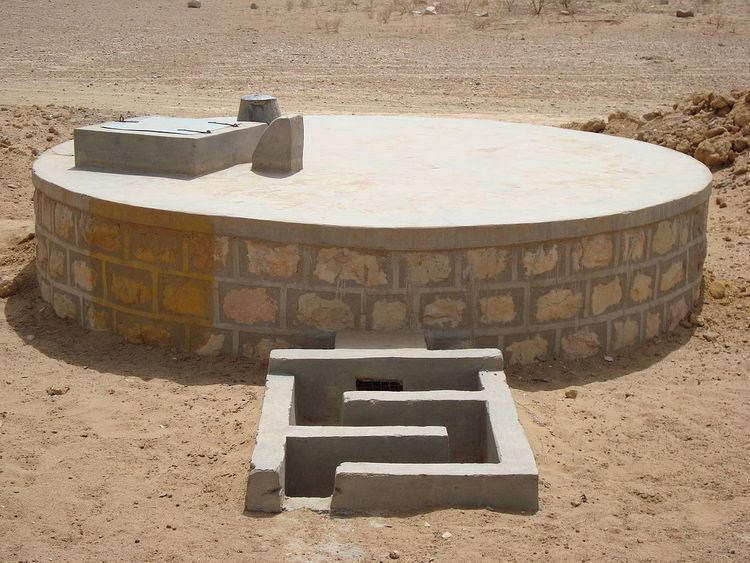 | ||
Tanka is a traditional rainwater harvesting technique, common to the Thar desert region of Rajasthan, India. It is meant to provide drinking water for a single or a small group of families and is an important element of water security in these arid regions. A Taanka is a cylindrical underground rainwater storage cistern usually 10’ x 10’ in size, wherein rainwater from rooftops, a courtyard or natural or artificially prepared catchment flows into the paved underground pit, through filtered inlets made on the external wall of the structure, where it is stored and can be used by one family during the dry season. Once fully filled, the water is sufficient for a family of 5-6 members for a period of 5–6 months, and saves it from everyday-water-fetching-drudgery.
Contents
The technique was largely abandoned in later 20th century as pipes lines or hand pumps were laid, it was when faced with drought like situations, inadequate supplies of piped water on the account of growing population, which also resulted in depleted or contaminated ground water, this traditional method was revived, along with other traditional rainwater harvesting structures like, Naadi, a village pond and Beri, a small rainwater-collecting wells, especially for supplying drinking water.
History
Though originally found in the desert towns, the system has since gained immense popularity in rural areas. In Phalodi, Barmer and Balotra region, rural taankas were found that were 6.1 metres deep, 4.27 metres long and 2.44 metres wide. This technique of harvesting rainwater was perfected to a fine art in the arid regions of western Rajasthan.
Bikaner was founded by Rao Bika in 1489 AD. The choice of Bikaner as an urban center seems to have been strongly influence by the availability of tracts of mudiya kanker which possess excellent run off characteristics. This facilitated rainwater harvesting through an elaborate network of tanks. The catchments area (Agor) of these tanks was treated as a sacred area where human activities like defecation were prohibited.
Overview
In towns around Bikaner, there was an abundance of tanks. The most important ones being at Kolayat with a catchment area of 14,900 ha., Gajner 12,950 ha., and Ganga sarovar with 7,950 hectares. The water needs of the town were met by the innumerable tanks in and around Bikaner, together with the wells and taankas that each house traditionally built for harvesting rainwater from the roof tops. The water from the taankas was used only for drinking purposes. If in any year there was less than normal rainfall and the taankas did not get filled, water from proximal wells and tanks would be obtained to fill the household taankas. In this way, the people of Bikaner were able to meet their water requirements.
